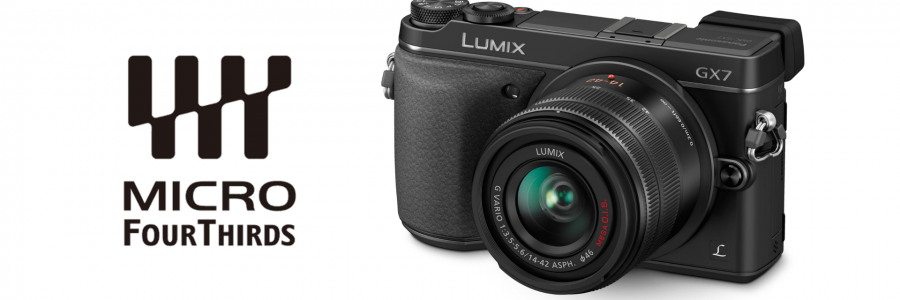
Switching to Micro 4/3
First, let’s put my opinion in perspective. The first interchangeable lens camera that I used was a Canon REBEL T1i. I later upgraded to a T4i, mostly for video features. After deciding that my Canon setup occupied to much space for a trip that I was taking, I decided to look into smaller options. I went with an older model Micro 4/3 camera, the Panasonic GX7. I kept both systems around for a while, and used each one when it was appropriate. However, since I had college just around the corner, I didn’t see myself having time to fully utilize two camera systems. After a while I realized that the longer I waited to sell one of them, the more it would depreciate, so I elected to sell my Canon system, which I had owned for longer. I decided that I could always buy a much nicer system once I graduated, and having no leftovers would allow me to make a decision based on which was the best, not based on what gear I already owned. Having decided to use Micro 4/3 for now, I thought I’d share some Pros and Cons of the system to help you make your decision.
Pros
Smaller equipment size
This was the primary reason why I chose Micro 4/3. As I mentioned previous, I take a lot of photos while travelling. For certain trips, I just couldn’t bring a huge camera system. With my GX7, I do not need a dedicated camera bag. I can toss everything I need into whatever bag I’d be carrying anyway.
Many manufacturers making compatible lenses
Even though I haven’t made heavy use of this feature, it is worth mentioning. It will probably be most useful when it comes time to get a new camera body. I like knowing I can keep my current lenses even if I choose a different manufacturer.
Lenses from other systems more easily adapted
This comes down to sensor size. Any lenses designed for a sensor at or lower than the size of Micro 4/3 can be adapted with a passive adapter. This is quite popular, and many adapters are available for cheap. I don’t have any experience with these other than being aware of their existence.
Good for video
Even if still photo quality can’t quite match bigger sensors, video is lower resolution, and the difference isn’t as noticeable. I now shoot most of my YouTube videos with my GX7, and in most cases the quality is the same or better than the Canon system I used before. There are also more video oriented cameras like the GH4. Some Blackmagic cameras (which are dedicated to video) also use Micro 4/3 lenses.
The smaller sensor also has a deeper depth of field. This refers to the range of distances from the lens that are in focus. This does make it harder to get blurry backgrounds, but it makes the camera’s autofocus more reliable. Depending on the situation, I can actually use it for video, whereas Canon’s system was never good enough for my tastes.
Less professional looking
Especially when you’re traveling in unfamiliar places, the last thing you want is to stick out. When you use a camera with the DSLR body style, people automatically associate it with what the pros use, and assume it is expensive. My GX7 (especially with smaller lenses attached) makes people think I’m holding an older point and shoot.
Cons
Low light performance
This is the biggest drawback for me. When shooting on my Canon system, I discovered that ISOs of up to 1600 would look clean, and 3200 would be okay depending on the situation. This is not the case with Micro 4/3. Of course, technology is getting better all the time, but with my GX7, the highest I really want to go is ISO 800. Beyond that, noise starts getting introduced to the image.
Less professional looking
I know I previously said that this can be a pro, but it can also be a con. If someone is paying you to be a photographer, you don’t want them thinking you’re using cheap equipment. Of course, you and I know that Micro 4/3 systems aren’t cheap, but they’re just going off looks. This also depends a lot on the camera you’re using. A GH4 has a pretty large body and shouldn’t cause many problems.
More expensive
Even though I bought an older model camera, it still didn’t come cheap. To get my GX7, a 14-140 zoom, and 20mm prime, I paid nearly $2000. Prices change all the time, so I can’t say exactly what you’ll pay, but be prepared to pay more for camera bodies and lenses. If you’re up for experimentation, you can consider adapting older lenses, which can be found cheap online.
Hopefully my experience has helped. Let me know if there’s any more information I can provide that would be helpful. I’ll consider making a YouTube video on this topic if there is enough demand.